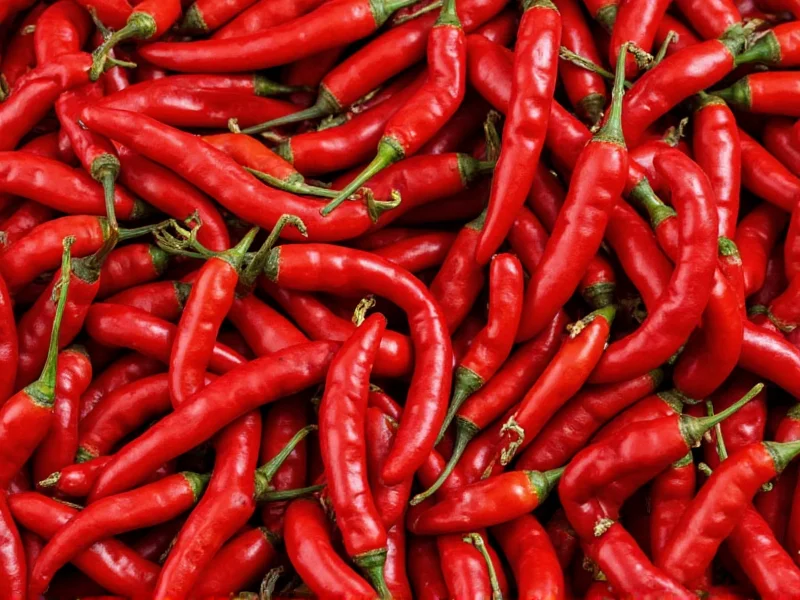Understanding chipotle pepper spiciness requires examining their origin and processing. Chipotles aren't a separate pepper variety but rather jalapeños that have been allowed to fully ripen on the plant, then smoke-dried. This transformation process concentrates their capsaicin content while adding complex flavor dimensions. The smoking process doesn't increase heat but preserves the capsaicin that gives these peppers their characteristic warmth.
What Exactly Are Chipotle Peppers?
The term "chipotle" comes from the Nahuatl language, combining "chil" (chili) and "poctli" (smoked). These peppers start as fully mature red jalapeños that undergo a specialized smoking process, traditionally over wood fires in ovens called smokers. This curing method can take several days, during which the peppers lose moisture and develop their signature wrinkled appearance and deep reddish-brown color.
When shopping for chipotle peppers, you'll typically find them in two forms: dried whole peppers or canned in adobo sauce (a tomato-based sauce with vinegar, garlic, and spices). Both versions maintain the characteristic heat level, though the canned variety may seem milder due to the sauce's cooling effect.
Measuring Chipotle Pepper Heat: The Scoville Scale Explained
The Scoville scale, developed by pharmacist Wilbur Scoville in 1912, measures chili pepper heat by determining capsaicin concentration. Originally using human testers, modern measurements employ high-performance liquid chromatography for precise results. Chipotle peppers register between 2,500 and 8,000 Scoville Heat Units (SHU), placing them firmly in the medium heat category.
| Pepper Type | Scoville Heat Units (SHU) | Heat Level |
|---|---|---|
| Chipotle Pepper | 2,500-8,000 | Medium |
| Jalapeño Pepper (fresh) | 2,500-8,000 | Medium |
| Serrano Pepper | 10,000-23,000 | Medium-Hot |
| Habanero Pepper | 100,000-350,000 | Very Hot |
| Ghost Pepper | 855,000-1,041,427 | Extremely Hot |
Factors That Influence Chipotle Pepper Spiciness
Several variables affect how spicy chipotle peppers taste in practice:
- Growing conditions: Soil composition, climate, and water availability impact capsaicin production
- Ripeness at harvest: Fully red jalapeños contain more capsaicin than green ones
- Smoking duration: Longer smoking can concentrate heat slightly
- Seed and membrane content: Most capsaicin resides in the white ribs and seeds
- Individual tolerance: Personal heat sensitivity varies significantly between people
Interestingly, the smoking process that creates chipotle peppers doesn't increase their Scoville rating but does transform their flavor profile. The smokiness can sometimes mask the initial heat sensation, making them seem milder than fresh jalapeños of equivalent SHU, though the actual capsaicin content remains similar.
Using Chipotle Peppers in Cooking: Managing the Heat
When working with chipotle peppers, several techniques help manage their spiciness while preserving flavor:
- Remove seeds and white membranes (placenta) where most capsaicin concentrates
- Soak dried chipotles in warm liquid before use to rehydrate and slightly reduce heat
- Start with small amounts (½ pepper) and adjust to taste
- Balance heat with dairy products (yogurt, sour cream) or acidic ingredients (lime juice)
- Combine with sweet elements like honey or maple syrup to counterbalance spiciness
Chefs often note that chipotle peppers deliver a more complex heat experience than fresh jalapeños. The smokiness creates a gradual warmth that builds slowly rather than delivering an immediate punch. This makes them excellent for dishes where you want noticeable heat without overwhelming spiciness, such as barbecue sauces, marinades, and stews.
Common Misconceptions About Chipotle Pepper Heat
Several myths persist about chipotle peppers' spiciness:
- Myth: Chipotles are significantly hotter than fresh jalapeños
Fact: They have nearly identical Scoville ratings, though the smoking process changes heat perception - Myth: All chipotle peppers have the same heat level
Fact: Natural variation means some can be twice as hot as others from the same batch - Myth: Canned chipotles in adobo are milder than dried versions
Fact: The heat level remains similar; the sauce simply distributes it differently
Understanding that chipotle peppers offer medium heat with distinctive smoky flavor helps cooks use them more effectively. Their versatility makes them valuable for adding depth to dishes without excessive spiciness, distinguishing them from hotter peppers like habaneros or ghost peppers that dominate with heat rather than complexity.
Frequently Asked Questions
Are chipotle peppers hotter than regular jalapeños?
Chipotle peppers and fresh jalapeños have nearly identical heat levels (2,500-8,000 SHU) since chipotles are simply smoked jalapeños. The smoking process changes the flavor profile but doesn't significantly increase the capsaicin content. Many people perceive chipotles as slightly milder because the smokiness can mask the initial heat sensation.
How can I reduce the spiciness of chipotle peppers in a recipe?
To reduce chipotle pepper heat, remove all seeds and white membranes (where most capsaicin concentrates), soak the peppers in warm liquid before use, or start with smaller amounts. Adding dairy products like yogurt or sour cream, acidic ingredients like lime juice, or sweet elements like honey can also balance the heat. Remember that heat builds gradually with chipotles, so wait a few minutes before adjusting seasoning.
Do canned chipotle peppers in adobo sauce have the same heat level as dried chipotles?
Yes, canned chipotle peppers in adobo sauce have the same fundamental heat level (2,500-8,000 SHU) as dried chipotles since they're the same pepper processed differently. The adobo sauce may distribute the heat differently and include cooling ingredients like tomatoes and vinegar, which can make them seem milder initially, but the capsaicin content remains equivalent.
Why do some chipotle peppers seem much hotter than others?
Natural variation in capsaicin production causes differences in heat between individual chipotle peppers. Factors like growing conditions, soil composition, water availability, and exact ripeness at harvest all influence final heat levels. Even within the same batch, some peppers may measure closer to 2,500 SHU while others approach 8,000 SHU. This variation is normal for all chili peppers.











 浙公网安备
33010002000092号
浙公网安备
33010002000092号 浙B2-20120091-4
浙B2-20120091-4